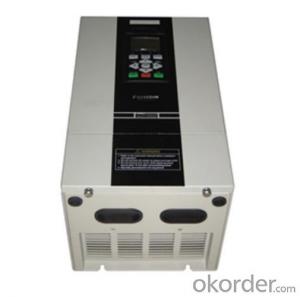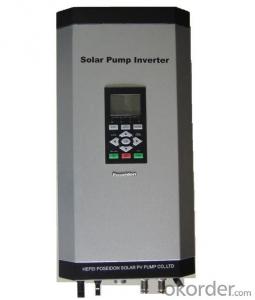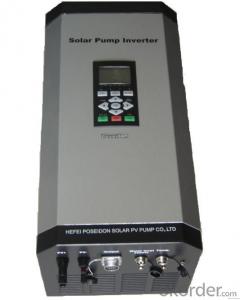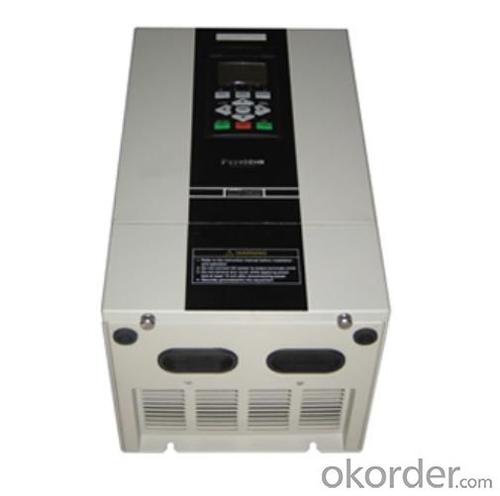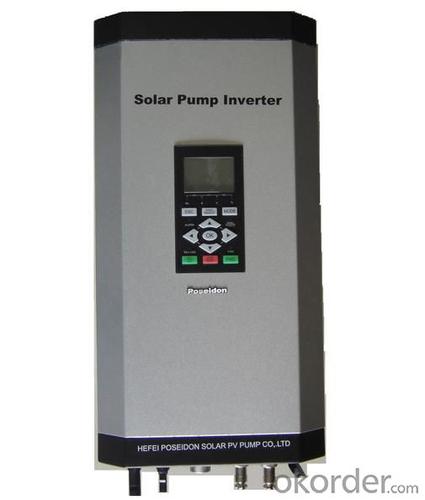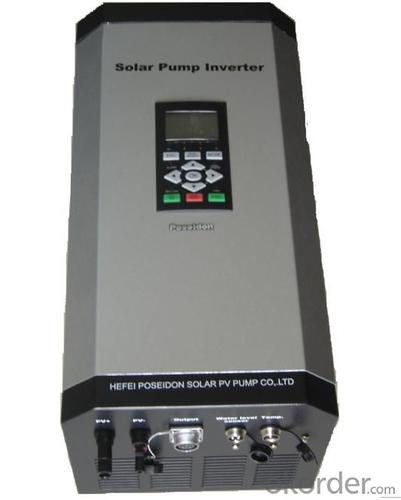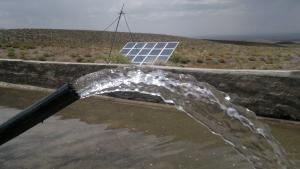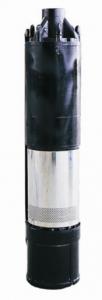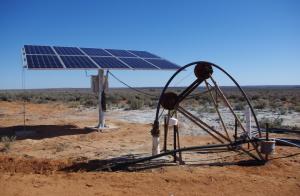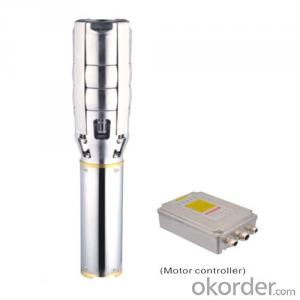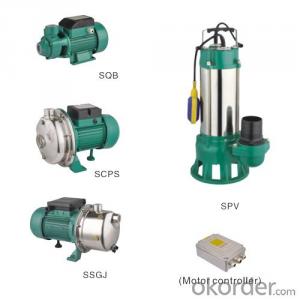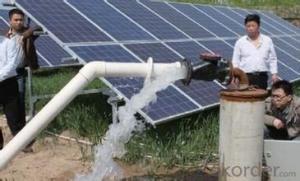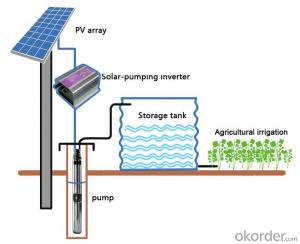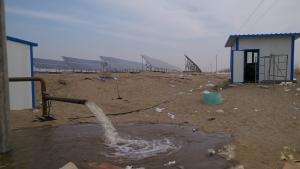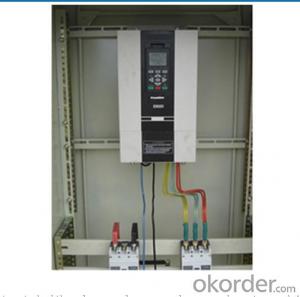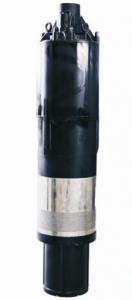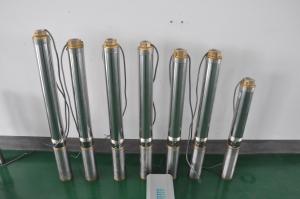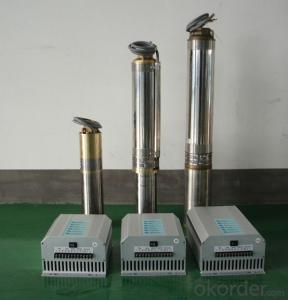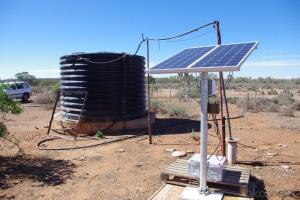RPS 400 Solar Pump FCPM11KH Inverter
- Loading Port:
- China Main Port
- Payment Terms:
- TT OR LC
- Min Order Qty:
- -
- Supply Capability:
- -
OKorder Service Pledge
Quality Product, Order Online Tracking, Timely Delivery
OKorder Financial Service
Credit Rating, Credit Services, Credit Purchasing
You Might Also Like
Solar pump inverter FCPM11KH Product Description:
Solar water pumping system is constructed with solar panel array,solar pump inverter and AC water pump, DC current produced from solar panel will be delivered to solar pump inverter,and it will convert it into AC current to drive water pump,and will automatically regulate output frequency according to sun radiance intensity,maximally realize MPPT tracking function.
Features
Adopting the proposed dynamic VI maximum power point tracking (MPPT) control method, with fast response, and reliable operation, achieves efficiency of 99%.
Designed with variable frequency driver, greatly improves efficiency
Extremely high efficiency
Digital mode control, with automatic operation and manual operation mode options
Complete protection functions
Adopts intelligent IPM module, with high reliability
LCD display and operation panel, in real time presents operating data
Optional for water level measurement and control circuit
Applicable for general ACC pumps, like centrifugal pump, piston pump etc.
Independent intellectual property; Highly effective, the redundant reliability, exempts the maintenance and the long life.
The pumps are soft started, fully protected.
No batteries are used. So better Sunlight, more water.
Datasheet.
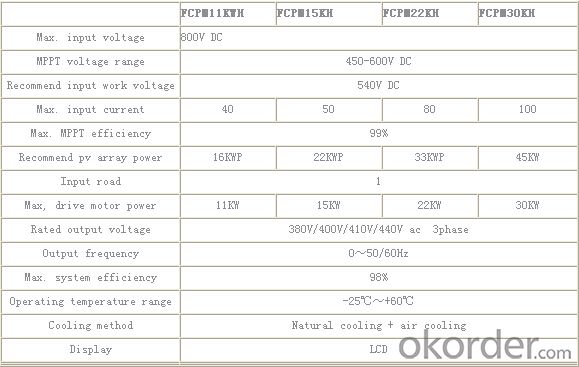
- Q: Can a solar pump be used for water supply in remote oil rigs?
- Yes, a solar pump can be used for water supply in remote oil rigs. Solar pumps are a viable and sustainable solution for water supply in remote locations, as they can operate efficiently using solar energy. They eliminate the need for grid connection or fuel-powered pumps, reducing costs and environmental impact. Additionally, solar pumps can provide a reliable water supply, ensuring the smooth operation of oil rigs in remote areas.
- Q: Can a solar pump be used for mine dewatering or industrial applications?
- Yes, a solar pump can be used for mine dewatering or industrial applications. Solar pumps are efficient and environmentally friendly alternatives to traditional pumps as they utilize solar energy to power the pumping system. They can effectively handle the dewatering needs of mines or other industrial sites, providing a reliable and cost-effective solution. Additionally, the use of solar pumps can help reduce dependency on fossil fuels and lower operational costs in the long run.
- Q: Can a solar pump be used for water supply in off-grid military bases?
- Indeed, water supply in off-grid military bases can be facilitated through the use of solar pumps. These pumps present themselves as a sustainable and cost-effective alternative for remote locations where traditional electricity is not easily accessible. By harnessing solar energy through photovoltaic panels, these pumps are able to convert sunlight into electricity, which is then utilized to operate the pump that draws water from a well or other water source, subsequently supplying it to the base. Solar pumps boast numerous advantages for off-grid military bases. To begin with, they operate independently from the power grid, eliminating the necessity for expensive and regularly maintained fuel or diesel generators. Consequently, solar pumps are more reliable and self-sustaining, diminishing the logistical challenges associated with fuel supply in remote areas. Additionally, in comparison to conventional pumps, solar pumps have a reduced environmental impact. They do not release greenhouse gas emissions or generate noise pollution, making them an ideal choice for military bases that prioritize sustainability and minimizing their ecological footprint. Furthermore, solar pumps can be effortlessly installed and operated in various terrains. They necessitate minimal maintenance and possess a prolonged lifespan, guaranteeing a consistent and dependable water supply for military personnel stationed in off-grid regions. In conclusion, solar pumps are a feasible option for fulfilling water supply requirements in off-grid military bases. They offer a sustainable and cost-effective solution, operate independently from the power grid, have a diminished environmental impact, and are simple to install and maintain.
- Q: How does a solar pump handle debris and sediment in the water?
- A solar pump typically incorporates a filtration system that helps to handle debris and sediment in the water. The pump is equipped with filters that prevent particles, such as leaves, twigs, and sand, from entering the system and clogging the pump or blocking the water flow. These filters are designed to efficiently trap and remove debris, ensuring that only clean water is pumped. Additionally, some solar pumps may also have self-cleaning mechanisms or backwashing capabilities to further prevent clogging and maintain optimal performance.
- Q: Can a solar pump be used for snowmaking in ski resorts?
- Yes, a solar pump can be used for snowmaking in ski resorts. Solar pumps are an environmentally friendly alternative to traditional pumps that are powered by electricity or diesel engines. They utilize solar energy to power the pump, which reduces carbon emissions and operating costs. Since ski resorts typically have ample sunlight, solar pumps can effectively generate the required water pressure and flow rate needed for snowmaking. Additionally, solar pumps can be easily integrated into existing snowmaking systems, making it a viable option for ski resorts looking to reduce their environmental impact.
- Q: What is the expected lifespan of the motor in a solar pump?
- The expected lifespan of a motor in a solar pump can vary depending on various factors such as the quality of the motor, maintenance, and usage. However, on average, a well-maintained motor in a solar pump can last anywhere between 10 to 20 years.
- Q: What are the different types of solar pumps available?
- There are several types of solar pumps available, including submersible solar pumps, surface solar pumps, and solar-powered pool pumps. Submersible solar pumps are designed to be placed underwater and are commonly used for irrigation, drinking water supply, and livestock watering. Surface solar pumps are placed above ground and are suitable for applications like irrigation, water supply, and fountain systems. Solar-powered pool pumps are specifically designed for circulating water in swimming pools, using solar energy to operate and reduce energy costs.
- Q: How does the elevation of the water source affect the performance of a solar pump?
- The elevation of the water source directly affects the performance of a solar pump. As the elevation increases, the pump has to work against greater gravitational forces, resulting in decreased efficiency and lower water flow rates. Conversely, if the water source is at a lower elevation, the pump can operate more efficiently and deliver higher flow rates. Therefore, the elevation of the water source is a crucial factor to consider when determining the performance capabilities of a solar pump.
- Q: Can a solar pump be used for waterfalls and cascades in gardens?
- Yes, a solar pump can be used for waterfalls and cascades in gardens. Solar pumps are designed to harness energy from the sun and convert it into power to run water features. They are a sustainable and eco-friendly option, providing a reliable source of energy to create stunning waterfalls and cascades in gardens without the need for electricity or traditional pumps.
- Q: Can solar pumps be used for water supply in schools or public facilities?
- Yes, solar pumps can be effectively used for water supply in schools or public facilities. Solar pumps are a sustainable and reliable solution for providing water in areas where electricity or conventional pumps may not be readily available. They can efficiently harness solar energy to pump water from wells, boreholes, or other water sources, ensuring a consistent and cost-effective water supply for schools and public facilities. Additionally, solar pumps are environmentally friendly and require minimal maintenance, making them an ideal choice for sustainable water management in these settings.
Send your message to us
RPS 400 Solar Pump FCPM11KH Inverter
- Loading Port:
- China Main Port
- Payment Terms:
- TT OR LC
- Min Order Qty:
- -
- Supply Capability:
- -
OKorder Service Pledge
Quality Product, Order Online Tracking, Timely Delivery
OKorder Financial Service
Credit Rating, Credit Services, Credit Purchasing
Similar products
Hot products
Hot Searches
Related keywords
